
Parte Vieja: The Historic Heart of San Sebastián
Explore Parte Vieja, the historic heart of San Sebastián, where culinary delights, rich history, and vibrant nightlife await you.
Parte Vieja, also known as Old Town, is the beating heart of San Sebastián, Spain. Nestled between the scenic Urgull Mountain and the picturesque La Concha Bay, this charming neighborhood is a must-visit for any traveler. Its cobbled streets, historic buildings, and vibrant atmosphere make it a delightful place to explore. The Old Town is famous for its culinary delights, particularly its pintxos (Basque tapas). You'll find countless bars and restaurants serving up these delicious bites, each with its own unique twist. Don't miss the chance to sample some traditional Basque cuisine while you're here. Beyond its food scene, Parte Vieja is rich in history and culture. The area is home to several important landmarks, including the San Vicente Church, San Telmo Museum, and the bustling Plaza de la Constitución. Wander through its narrow streets and you'll discover hidden gems at every turn, from quaint shops to lively squares where locals gather. Parte Vieja is also a hub for nightlife. As the sun sets, the neighborhood comes alive with music, laughter, and the clinking of glasses. Whether you're looking for a relaxed evening with a glass of local wine or a night of dancing and revelry, the Old Town has something to offer everyone.
Local tips in Parte Vieja (Old Town)
- Visit in the late afternoon to experience both daytime charm and evening vibrancy.
- Wear comfortable shoes as the cobbled streets can be uneven.
- Try the local cider, known as 'sidra', which pairs perfectly with pintxos.
- Head to Plaza de la Constitución for a great spot to people-watch and soak in the local atmosphere.
- Make sure to visit the San Telmo Museum for a deeper understanding of Basque culture and history.
Parte Vieja: The Historic Heart of San Sebastián
Parte Vieja, also known as Old Town, is the beating heart of San Sebastián, Spain. Nestled between the scenic Urgull Mountain and the picturesque La Concha Bay, this charming neighborhood is a must-visit for any traveler. Its cobbled streets, historic buildings, and vibrant atmosphere make it a delightful place to explore. The Old Town is famous for its culinary delights, particularly its pintxos (Basque tapas). You'll find countless bars and restaurants serving up these delicious bites, each with its own unique twist. Don't miss the chance to sample some traditional Basque cuisine while you're here. Beyond its food scene, Parte Vieja is rich in history and culture. The area is home to several important landmarks, including the San Vicente Church, San Telmo Museum, and the bustling Plaza de la Constitución. Wander through its narrow streets and you'll discover hidden gems at every turn, from quaint shops to lively squares where locals gather. Parte Vieja is also a hub for nightlife. As the sun sets, the neighborhood comes alive with music, laughter, and the clinking of glasses. Whether you're looking for a relaxed evening with a glass of local wine or a night of dancing and revelry, the Old Town has something to offer everyone.
Iconic landmarks you can’t miss
Comb of the Wind (Eduardo Chillida, 1976)
Discover the breathtaking Comb of the Wind in San Sebastián, a sculptural marvel by Eduardo Chillida blending art, nature, and stunning coastal views.

Gipuzkoa Plaza
Discover the lush beauty and cultural vibrancy of Gipuzkoa Plaza in Donostia-San Sebastian, a perfect blend of nature and urban charm.

Miramar Jauregia
Experience the regal charm and scenic beauty of Miramar Jauregia, a must-visit convention center and park in San Sebastián, perfect for cultural exploration and leisurely enjoyment.

Good Shepherd of San Sebastián Cathedral
Explore the stunning architecture and serene ambiance of the Good Shepherd Cathedral, an iconic symbol of San Sebastián's rich cultural heritage.

San Telmo Museum
Explore Basque culture and history at the San Telmo Museum, a must-visit art museum in the heart of Donostia-San Sebastian.
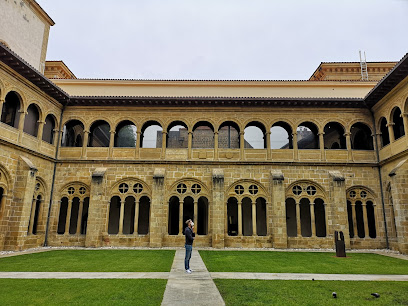
Motako Gaztelua
Discover the historical grandeur and scenic views at Motako Gaztelua, a must-see castle in Donostia-San Sebastián, rich in culture and beauty.
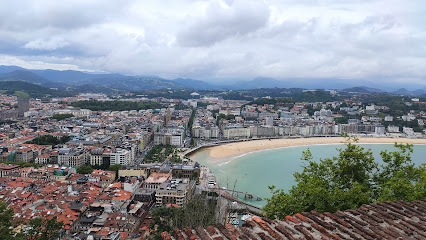
Koruko Andre Mariaren basilika
Explore the stunning Koruko Andre Mariaren Basilika, a Baroque masterpiece in Donostia-San Sebastián, rich in history and cultural significance.

Plaza de la Constitucion
Explore the vibrant Plaza de la Constitución in Donostia-San Sebastián, a historical landmark filled with culture, cuisine, and stunning architecture.

Baluarte del Mirador
Discover breathtaking views and rich history at Baluarte del Mirador, San Sebastián's iconic observation deck atop Monte Urgull.

Monte Urgull
Explore the historic Monte Urgull in San Sebastián, where breathtaking views and rich history create an unforgettable experience for every traveler.

Pasealeku berria balcón
Explore Pasealeku Berria, an observation deck in Donostia-San Sebastián, where stunning views of the coast meet vibrant city life.

Trinitate plaza
Discover the charm of Trinitate Plaza, a historic square in Donostia-San Sebastián, surrounded by stunning architecture and lively local culture.

Plaza Sarriegi
Explore the vibrant Plaza Sarriegi, a cultural hub in Donostia-San Sebastián, where history meets modernity in a picturesque setting.

San Sebastián City Tour
Discover the captivating blend of beaches, culture, and gastronomy in San Sebastián, a must-visit destination in Spain's Basque Country.

Construcción Vacía
Explore Construcción Vacía, a captivating outdoor sculpture in Donostia-San Sebastián that invites interaction and creativity amidst stunning surroundings.

Unmissable attractions to see
Donostiako Elizbarruti Museoa
Uncover the rich cultural heritage of the Basque Country at Donostiako Elizbarruti Museoa, a captivating museum in San Sebastián showcasing religious art and history.

Olatuen Begiratokia/Mirador de las Olas
Discover the breathtaking coastal views and serene ambiance at Olatuen Begiratokia, a must-visit lookout in Donostia-San Sebastian.

the smoking terrace
Experience the charm of Donostia-San Sebastian at The Smoking Terrace, where relaxation meets stunning views in the heart of the city.

Essential places to dine
Gandarias
Discover authentic Basque flavors at Gandarias, a must-visit restaurant in Donostia-San Sebastián offering exquisite dishes and a warm atmosphere.

Atari Gastroleku
Experience the vibrant flavors of Basque cuisine at Atari Gastroleku, a top-rated tapas bar in San Sebastian that delights every palate.

Borda Berri
Savor authentic Basque cuisine at Borda Berri, where vibrant flavors meet traditional tapas in the heart of San Sebastián.
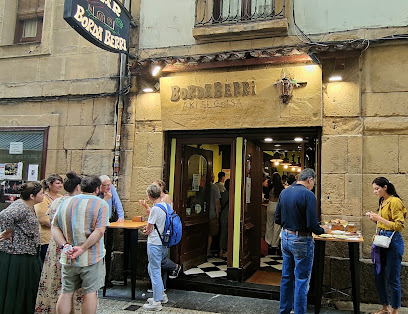
MendaurBerria
Discover the vibrant flavors of Basque cuisine at MendaurBerria, where authentic pintxos meet lively atmosphere in San Sebastián.

Polka San Sebastián
Discover the authentic taste of Basque cuisine at Polka San Sebastián—where tradition meets contemporary dining in a charming setting.
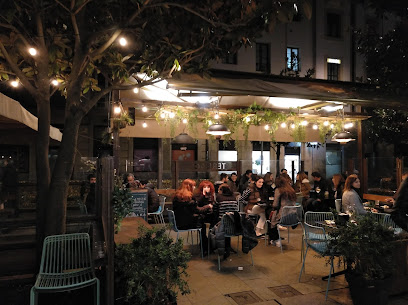
Astelena
Experience exquisite Basque cuisine at Astelena in Donostia-San Sebastián – where every dish tells a story.
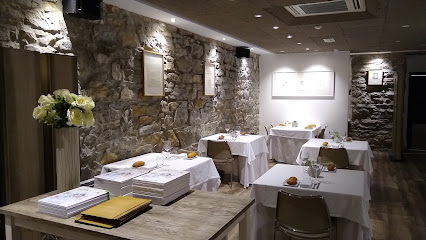
Sirimiri Gastroleku
Discover exquisite Basque cuisine at Sirimiri Gastroleku in Donostia-San Sebastian - where tradition meets innovation.

La Madame
Discover La Madame: A vibrant modern European restaurant in San Sebastián offering exquisite cuisine and lively nightlife.

Restaurante SSua Arde Donostia
Experience authentic Basque cuisine at Restaurante SSua Arde Donostia - where tradition meets flavor in every dish.

Donostiarra Taska
Experience authentic Basque cuisine at Donostiarra Taska, where every dish tells a story of tradition and flavor in the heart of San Sebastián.

Markets, malls and hidden boutiques
ALE-HOP
Explore ALE-HOP in Donostia-San Sebastian for unique gifts and souvenirs that capture the essence of Spanish culture and creativity.

San Sebastian Duck Store
Explore San Sebastian Duck Store for unique gifts and local treasures in the heart of Donostia-San Sebastian, capturing the essence of Basque culture.

Michael`s Regalos
Explore the vibrant charm of Michael's Regalos in Donostia-San Sebastián, where unique souvenirs and fashion accessories await every visitor.
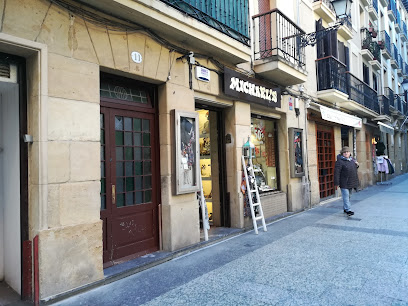
Wicca Store
Explore the enchanting Wicca Store in Donostia-San Sebastián for unique clothing and accessories that celebrate the mystical and extraordinary.

The Bohemian Shop
Explore The Bohemian Shop in Donostia-San Sebastian for a unique selection of vintage clothing that captures the essence of retro style.

Bazar Aquarium
Explore Bazar Aquarium in Donostia-San Sebastian for unique gifts and souvenirs that embody the spirit of the Basque Country.

COCO DONOSTI- Ropa y Complementos - SAN SEBASTIÁN
Explore the essence of Basque fashion at COCO DONOSTI, a boutique offering curated clothing and unique accessories in San Sebastián.

PYC
Explore PYC Gift Shop for unique handcrafted treasures in the heart of Donostia-San Sebastian, perfect for memorable souvenirs.
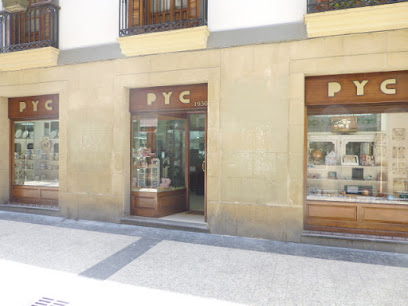
Côte Basque Vintage
Explore the charm of Côte Basque Vintage in San Sebastián, where vintage fashion and unique accessories meet the vibrant Basque culture.

SAOMI
Discover unique souvenirs and local crafts at SAOMI, the premier gift shop in Donostia-San Sebastian, capturing the essence of Basque culture.

Essential bars & hidden hideouts
Bar Sport
Discover the authentic flavors of San Sebastián at Bar Sport, where vibrant tapas and a lively atmosphere await you.

Atari Gastroleku
Discover the authentic taste of Basque cuisine at Atari Gastroleku, a vibrant tapas bar in the heart of San Sebastián.

Baztán Bar Restaurante
Experience the authentic taste of the Basque Country at Baztán Bar Restaurante, a top tapas bar in the heart of Donostia-San Sebastian.

Bar Martinez
Discover the vibrant flavors of Basque cuisine at Bar Martinez, a top-rated tapas bar in the heart of Donostia-San Sebastián.

The Hole Pub
Experience the lively darts scene at The Hole Pub, a popular dart bar in the heart of Donostia-San Sebastián, perfect for fun nights and cultural immersion.
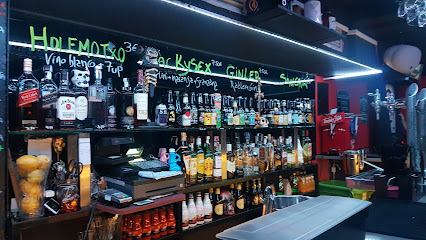
Txurrut Terraza Puba
Experience the vibrant nightlife of Donostia at Txurrut Terraza Puba, a pub offering local flavors, crafted cocktails, and a lively atmosphere.
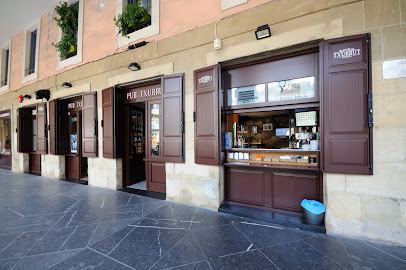
Arraun
Discover the vibrant nightlife of Donostia-San Sebastian at Arraun, where innovative cocktails and a friendly atmosphere await.

Bar Iguana
Experience the vibrant atmosphere and delicious tapas at Bar Iguana in Donostia-San Sebastian, a perfect spot for unwinding after a day of exploration.

Bar Bixigarri
Discover the vibrant flavors of Basque cuisine at Bar Bixigarri, a lively tapas bar in the heart of Donostia-San Sebastian.

White Tara
Discover the vibrant cocktail culture at White Tara in Donostia-San Sebastian, where creativity meets nightlife in a stunning setting.

Local Phrases
-
- HelloHola
[oh-lah] - GoodbyeAdiós
[ah-dee-ohs] - YesSí
[see] - NoNo
[noh] - Please/You're welcomePor favor/De nada
[por fah-vor/deh nah-dah] - Thank youGracias
[grah-thyahs] - Excuse me/SorryPerdón/Lo siento
[pair-dohn/loh see-ehn-toh] - How are you?¿Cómo estás?
[koh-moh ehs-tahs] - Fine. And you?Bien. ¿Y tú?
[byehn. ee too] - Do you speak English?¿Hablas inglés?
[ah-blahs een-glays] - I don't understandNo entiendo
[noh ehn-tee-ehn-doh]
- HelloHola
-
- I'd like to see the menu, pleaseMe gustaría ver la carta, por favor
[meh goos-tah-ree-ah vehr lah kahr-tah, por fah-vor] - I don't eat meatNo como carne
[noh koh-moh kahr-neh] - Cheers!¡Salud!
[sah-lood] - I would like to pay, pleaseMe gustaría pagar, por favor
[meh goos-tah-ree-ah pah-gahr, por fah-vor]
- I'd like to see the menu, pleaseMe gustaría ver la carta, por favor
-
- Help!¡Ayuda!
[ah-yoo-dah] - Go away!¡Fuera!
[foo-eh-rah] - Call the Police!¡Llame a la policía!
[yah-meh ah lah poh-lee-see-ah] - Call a doctor!¡Llame a un médico!
[yah-meh ah oon meh-dee-koh] - I'm lostEstoy perdido/a
[ehs-toy pair-dee-doh/ah] - I'm illEstoy enfermo/a
[ehs-toy ehn-fehr-moh/ah]
- Help!¡Ayuda!
-
- I'd like to buy...Me gustaría comprar...
[meh goos-tah-ree-ah kohm-prahr] - I'm just lookingSolo estoy mirando
[soh-loh ehs-toy mee-rahn-doh] - How much is it?¿Cuánto cuesta?
[kwan-toh kwehs-tah] - That's too expensiveEso es demasiado caro
[eh-soh ehs deh-mah-see-ah-doh kah-roh] - Can you lower the price?¿Puede bajar el precio?
[pweh-deh bah-hahr ehl pree-eh-soh]
- I'd like to buy...Me gustaría comprar...
-
- What time is it?¿Qué hora es?
[keh oh-rah ehs] - It's one o'clockEs la una en punto
[ehs lah oo-nah ehn poon-toh] - Half past (10)Las diez y media
[lahs dyehs eehs ee meh-dee-ah] - MorningMañana
[mah-nyah-nah] - AfternoonTarde
[tahr-deh] - EveningNoche
[noh-cheh] - YesterdayAyer
[ah-yehr] - TodayHoy
[oy] - TomorrowMañana
[mah-nyah-nah] - 1Uno
[oo-noh] - 2Dos
[dohs] - 3Tres
[trehs] - 4Cuatro
[kwah-troh] - 5Cinco
[theen-koh] - 6Seis
[says] - 7Siete
[syeh-teh] - 8Ocho
[oh-choh] - 9Nueve
[nweh-veh] - 10Diez
[dyehs]
- What time is it?¿Qué hora es?
-
- Where's a/the...?¿Dónde está...?
[dohn-deh ehs-tah] - What's the address?¿Cuál es la dirección?
[kwal ehs lah dee-rehk-syohn] - Can you show me (on the map)?¿Puedes enseñarme (en el mapa)?
[pweh-dehs ehn-seh-nyar-meh (ehn ehl mah-pah)] - When's the next (bus)?¿Cuándo es el próximo (autobús)?
[kwan-doh ehs ehl proh-ksee-moh (ow-toh-boos)] - A ticket (to ....)Un billete (a ...)
[oon bee-yeh-teh (ah ...)]
- Where's a/the...?¿Dónde está...?
History of Parte Vieja (Old Town)
-
San Sebastián, known as Donostia in Basque, was officially founded in 1180. The Parte Vieja area served as the original nucleus of the city, establishing its role as a focal point for trade and social interaction. The strategic location near the Bay of Biscay made it a desirable settlement for both locals and traders.
-
A significant event in the history of Parte Vieja occurred during the Peninsular War when British and Portuguese troops besieged the city in 1813. This siege led to the destruction of much of the old town, including many of its historic buildings. The aftermath necessitated extensive rebuilding, influencing the architectural style of the area.
-
The latter half of the 19th century marked a period of cultural and economic growth for Parte Vieja. The establishment of the railway in 1863 connected San Sebastián to larger urban centers, fostering tourism and trade. The area became known for its vibrant tapas bars, which attracted locals and visitors alike, solidifying its role as a cultural hub.
-
The early 20th century saw the emergence of Basque nationalism, with Parte Vieja at the heart of cultural revival movements. The establishment of cultural institutions and the promotion of the Basque language and traditions reflected a growing sense of identity. Festivals and events, such as the San Sebastián Day celebrated on January 20th, highlighted local customs and solidarity.
-
In recent decades, Parte Vieja has undergone significant urban renewal while retaining its historical charm. Efforts to preserve its architectural heritage, combined with the introduction of modern amenities, have made it a vibrant neighborhood for both locals and tourists. Its narrow streets, filled with pintxos bars and shops, continue to reflect the dynamic spirit of San Sebastián.
Parte Vieja (Old Town) Essentials
-
Parte Vieja (Old Town) is centrally located in San Sebastián, making it easily accessible from other neighborhoods. From the train station (Estación del Norte), it’s a 15-20 minute walk. If you are coming from the beach (La Concha), it's just a 10-minute stroll. Local buses and taxis are also available, with several bus lines connecting the area to other parts of the city. The nearest tram stop is also a short walk away.
-
Parte Vieja is best explored on foot due to its narrow streets and pedestrian-friendly layout. Public transport options include local buses that run frequently, and taxis are readily available for longer distances. Bicycles can be rented from local shops or bike-sharing programs, providing a fun way to explore the waterfront and nearby parks.
-
Parte Vieja is generally safe for tourists, but as in any urban area, it's wise to stay vigilant. Pickpocketing can occur in crowded places, particularly around popular pintxos bars and during festivals. Avoid poorly lit alleys at night and keep valuables secured. Areas near the Port may have slightly higher instances of petty crime.
-
In case of an emergency, dial 112 for police, fire, or medical assistance. The local hospital (Hospital Donostia) is accessible, and there are several pharmacies in the area for minor health issues. Ensure you have travel insurance that covers medical emergencies.
-
Fashion: Do wear comfortable shoes for walking; don't wear beach attire away from the beach. Religion: Do be respectful in churches; don't take photos where it is prohibited. Public Transport: Do offer your seat to the elderly; don't speak loudly on public transport. Greetings: Do greet locals with a friendly 'Kaixo' (Hello); don't forget to say 'Agur' (Goodbye). Eating & Drinking: Do try local pintxos and wines; don't eat or drink while walking.
-
To experience Parte Vieja like a local, visit pintxos bars during off-peak hours for a more authentic experience. Join locals in the evening for a 'pintxo-pote' (pintxo and drink special) on Thursdays. Explore the Mercado de la Brecha for fresh produce and local delicacies. Engage with the locals, as they are often happy to share recommendations about hidden gems in the area.
Trending Landmarks in Parte Vieja (Old Town)
-
Comb of the Wind (Eduardo Chillida, 1976)
-
Gipuzkoa Plaza
-
Miramar Jauregia
-
Good Shepherd of San Sebastián Cathedral
-
San Telmo Museum
-
Motako Gaztelua
-
Koruko Andre Mariaren basilika
-
Plaza de la Constitucion
-
Baluarte del Mirador
-
Monte Urgull
-
Pasealeku berria balcón
-
Trinitate plaza
-
Plaza Sarriegi
-
San Sebastián City Tour
-
Construcción Vacía
Nearby Cities to Parte Vieja (Old Town)
-
Things To Do in Pamplona
-
Things To Do in Bilbao
-
Things To Do in Santander
-
Things To Do in Lourdes
-
Things To Do in Burgos
-
Things To Do in Huesca
-
Things To Do in Bordeaux
-
Things To Do in Zaragoza
-
Things To Do in Toulouse
-
Things To Do in Lleida
-
Things To Do in Valladolid
-
Things To Do in Arinsal
-
Things To Do in El Serrat
-
Things To Do in La Massana
-
Things To Do in Ordino











